
Having renewed its entire range in the past two years with the launch of the 458 coupe and Spyder, the FF, the F12Berlinetta and the revised California Coupe-Cabriolet, one would think that Ferrari would just sit and wait for its customers to form an orderly queue and the cash to start flowing in.However, since the 400th and final Enzo rolled out of Maranello in 2004, the prancing horse lacks a true flagship that will continue the tradition that started with the 288 GTO and continued with the F40, F50 and the Enzo models.
The “F70”, as the pundits have christened the new hypercar, has already been caught testing, albeit heavily camouflaged. Ferrari has said that the production car will be revealed before the end of the year, although there are reports that it may its debut at the 2013 Detroit Auto Show in January or a little later at the 2013 Geneva Salon in March.
Ferrari CEO Amedeo Felisa has confirmed that the Enzo successor will feature a hybrid powertrain consisting of a mid-mounted V12, a compact electric motor and a battery pack placed in the car’s underbody.
Considering that Ferrari’s current range-topper, the F12berlinetta, has 730PS, and that Felisa said the new electric powertrain not only cuts emissions by 35 percent but also adds another 100HP to the car’s output, the Enzo replacement must be packing a serious amount of horsepower.
At this year’s Paris Motor Show, Ferrari revealed the hypercar's new composite chassis derived directly from Formula 1 technology. The company drew on its vast experience in composite materials for its new hybrid model that will be produced in a special series in limited numbers.
The materials, design methods, construction processes, staff and instruments used are shared with the Scuderia Ferrari Formula 1 team. In fact, the “new Enzo” was developed by a group of engineers that benefitted from the experience of Rory Byrne, Ferrari’s F1 chief designer who was behind 11 of the team’s Championship titles.
Industrial carbon fiber manufacturing techniques, such as RTM (Resin Transfer Molding), which are usually adopted in the automotive sector, were not used after Ferrari engineers decided that they did not meet their quality and functional standards.
The chassis incorporates four different types of carbon fiber and is hand-laminated, then cured in autoclaves following engineering processes that optimize the design by integrating the different components.
The main structure is made from T800 carbon with strategic applications of a unidirectional carbon fiber, the T800UD, for reinforcement. To ensure weight is kept as low as possible, the structural underbody and the cross-member are made from M46J, another type of extremely high tensile strength carbon fiber.
In important areas, such as the doors, very tough T1000 (which is also used in the nose-cone of the Scuderia’s F1 cars) was used as it is particularly efficient in terms of impact absorption. Finally, carbon fiber combined with Kevlar forms the under-tray that prevents debris damage.
Compared to the Enzo, which also had a carbon fiber chassis, torsional rigidity has been increased by 27 per cent and beam stiffness is up by 22 percent while, despite the extra weight of the hybrid components, it’s also 20 percent lighter.
You can watch the videos showing Ferrari’s new carbon fiber tub that will underpin the Enzo successor right after the jump.
By Andrew Tsaousis
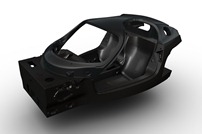
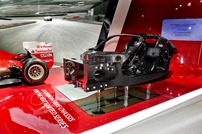
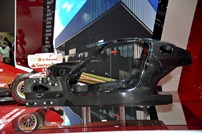

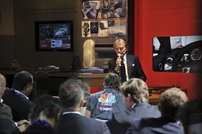
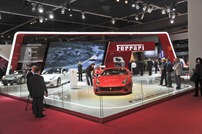

0 yorum:
Yorum Gönder